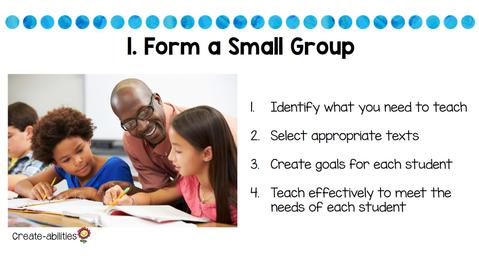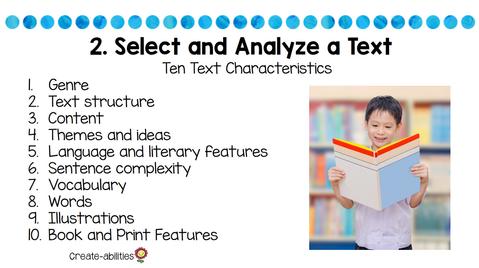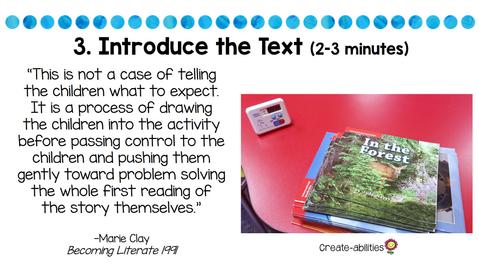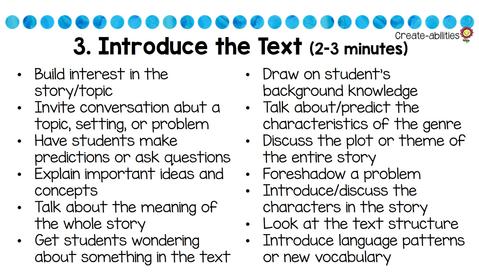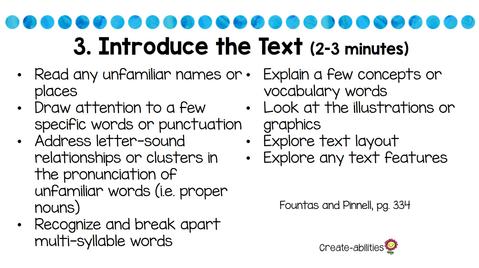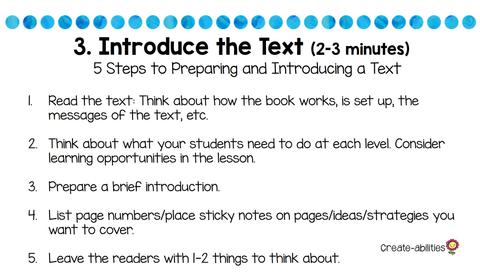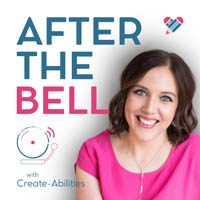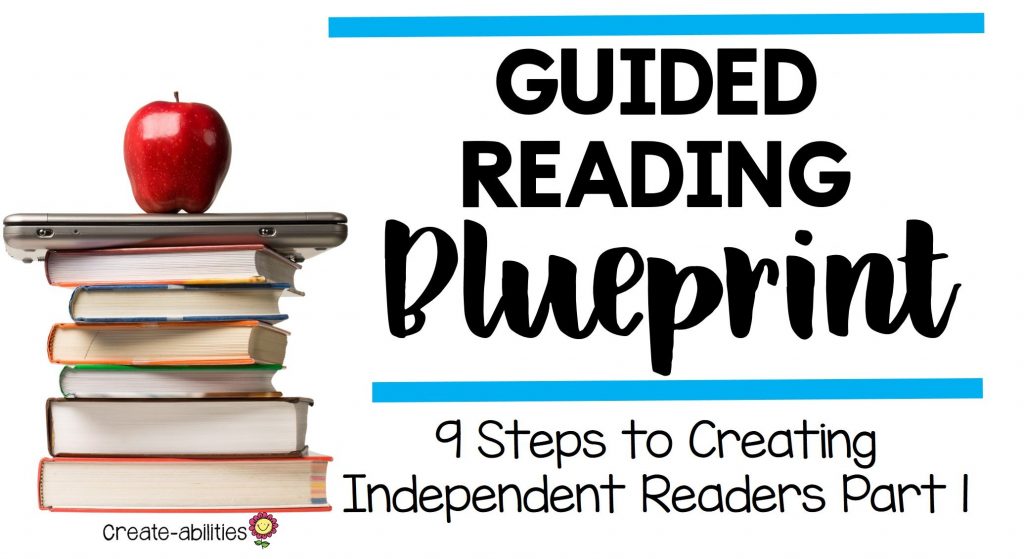
Guided Reading Blueprint: 9 Steps to Creating Independent Readers Part 1
Guided reading is a crucial part of our reading block. It’s a time to work with individual students to build their reading comprehension skills and add strategies to their toolbox. (Talk about pressure.)
So how do we do it? I’m going to lay out the exact steps you can take to make the most of your guided reading groups. I will give you the blueprint you need to set up and run your reading groups. There is SO much information out there that I’m going to break it up into three parts.
Reading researchers and guided reading gurus Fountas and Pinnell have laid out 9 essential elements of a guided reading lesson. As always, take what works for you and tweak what doesn’t.
(All of this information comes from Guided Reading, Second Edition: Responsive Teaching Across the Grades, The Literacy Continuum, Expanded Edition: A Tool for Assessment, Planning, and Teaching, PreK-8, The Next Step Forward In Guided Reading, as well as my own research and experience.)
Let’s start by taking a look at the 9 elements of guided reading groups.
9 Essential Elements of Guided Reading Lessons
- Form a small group.
- Select and analyze a text.
- Introduce a text.
- Observe and interact with students.
- Invite students to discuss the text.
- Make teaching points.
- Engage in letter or word work.
- Extend understanding through writing or drawing.
- Reflect and plan.
Those sound nice, but what does each step actually look like? Let’s dive in.
1. FORM A SMALL GROUP
The first priority is to know the readers in your class. This can be done through observations and interactions with your students. However, you will also need quantitative data for each student. This is done by using an assessment system that gives you an inventory of each reader’s range of abilities. Usually your school or district will have a formative assessment that they want you to use.
Using an assessment can help you
- identify what you need to teach each student or group
- select an appropriately-leveled text with the right amount of challenge
- create goals for each student and the group as a whole
- plan effective lessons to meet the needs of your students
After testing your students, you’ll want to create groups of 4-6 students that are similar in level. It might be impossible to have every single student on the same level, but some variance (1 level below or 1 level above) is okay. If you have a wide range of levels in your room, try working with another teacher in your grade or in your school so that each student is placed in the appropriate group.
After grouping your students together, it’s time to select the right text.
2. SELECT AND ANALYZE A TEXT
It’s important to pick a text that has the appropriate level of support and challenge. Remember that you are teaching readers, not the text. Every action in text selection is directed toward helping the readers shift a little each day. The goal is not simply to learn how to read this book, but to learn how to read.
(Fountas and Pinnell also suggest using a book that can be read in one sitting. I did a mixture of both. I loved diving into novels because there are so many aspects of a longer text that you can pull out and focus on. I would switch up the length and genre of the books we read to keep things fresh and interesting in my groups.)
The first step in preparing for a guided reading lesson is to read the text yourself and think about the characteristics. Ask yourself: What demands does this text make on readers? In other words, puzzle out what a reader has to do to read the text with comprehension, accuracy, and fluency. What you notice about the text must be very specific: text complexity, figurative language, text structure, genre, etc.
Some things to consider when choosing your text:
1.What ideas and concepts will be challenging for students? How will this stretch their thinking?
2.What words and phrases will be challenging to students? Are there any that pose extra challenge for my ELL’s?
3.What opportunities are there for making connections?
Preparing for these things ahead of time can help you ensure that you are prepared to solve challenges whenever they arise.
There are ten basic text characteristics that you can consider when selecting a text.
Ask yourself these questions:
- Is the topic engaging?
- Will it evoke curiosity?
- Is the plot interesting?
Asking these questions can help you ensure that you are choosing a book that will be engaging and motivating to your students.
I’m often asked what the difference is between words and vocabulary. Vocabulary is going to be Tier 3, domain-specific words. Things like gravity, rotation, atmosphere, etc. Words refer to multi-syllabic words, hard to decode words, or unknown words. Those are things like: shabby, plundered, clever, etc.
The challenge in a text partly depends on the number and difficulty of the words that the reader must solve by recognizing them or decoding them. A text that contains a great many of the same common words makes the text more accessible to readers (repeated words). The number of multi-syllable words in a text is related to difficulty, as is the number of scientific or technical words.
3. INTRODUCE THE TEXT
After choosing the right text, it’s time to introduce it to your readers.
The introduction is brief. It’s an orientation to the book. You are giving readers a “road map” to the text without taking away potential problem solving for the reader. The book introduction provides just enough support to enable your readers to take on a more complex text. There isn’t a “standard” introduction you can use each time. That will vary with the books and the readers in your room.
Look through the book and make a few notes.
- Are there text features you need to point out?
- Are there pictures or illustrations you want to draw attention to?
- Are there some challenging vocabulary words you need to front load?
Use your professional judgement and knowledge of your kids needs. Walk them through the title/topic, author/illustrator, and any important features you want to focus on.
Below are some options of things you can do when introducing a text. It is not a checklist, but a variety of strategies and approaches to introduce the book to your readers.
Want to learn more? Check out my Guided Reading Blueprint: 9 Steps to Creating Independent Readers webinar. It’s completely free and you get a certificate of completion just for attending.
Looking for print and go guided reading materials? I have everything you need for grades K-5. 🙂
Check out What Effective Guided Reading Looks Like here.
PEACE, LOVE, AND STICKY-NOTES,

Blog Categories
Meet the author


